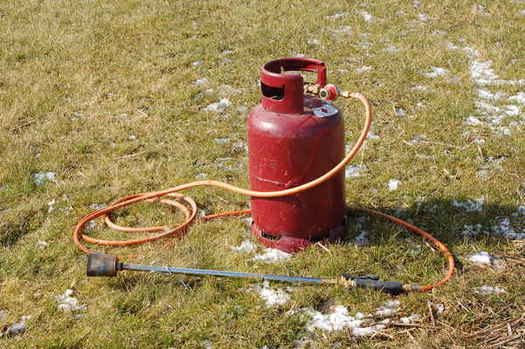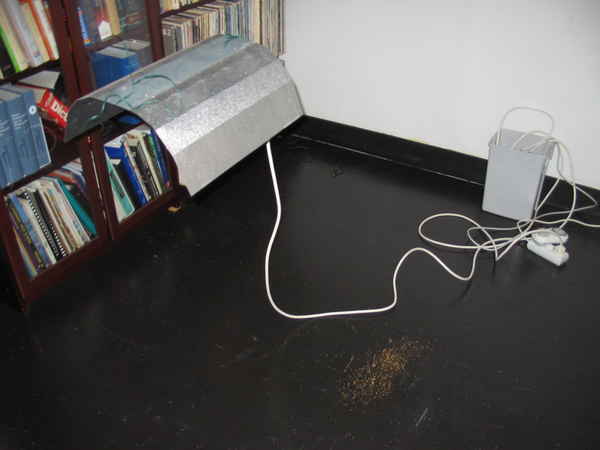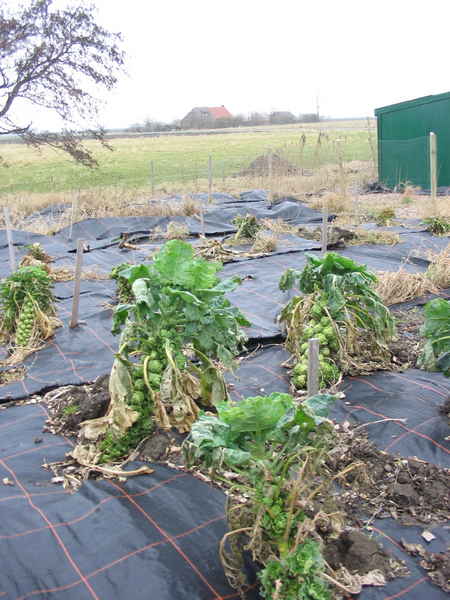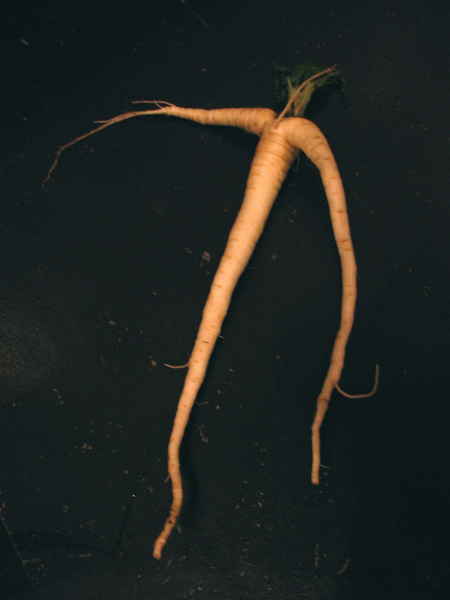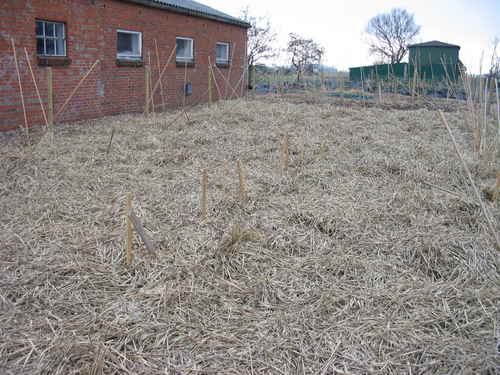Crop rotation is a very important aspect of a healthy garden. If you plant the same types of plants in the same space year after year, you will deplete the soil and provide a breeding ground for plant diseases and pests. Different types of plants have different rotational needs, for example members of the garlic and onion family should only be planted in the same ground once in 4-5 years, while cole plants about once in 3 years. It is wise to make a rotation scheme for your garden depending on what is necessary for the plants you grow. Crop rotations do not necessarily happen on an annual basis, for example you may follow garlic which is harvested in June or July, with a plant like turnips that can be planted in August and harvested a few months later.
In between other crop rotations, many people plant cover crops. A cover crop is one that is not necessarily intended to be grown for food, but rather the primary purpose of it is to improve the ground and keep it covered. Ground that is unused for too long will erode and accumulate weeds, and planting a cover crop can avoid this. One particularly useful type of cover crop is the family of leguminous nitrogen fixing plants. As well as loosening and improving the workability of the soil, these plants will take nitrogen from the air and fix it into the ground, leaving the ground richer in nutrients than before the plant was grown. Often cover crops are turned into the ground by digging or with a garden tiller after they are grown, leaving the ground richer in organic material.
Some example of common cover crops include winter rye, different types of clover, field peas, beans, yellow mustard, buckwheat, phacealia (a type of flower), as well as many other plants.
One of my favorite cover crops is fava beans. Fava beans have one of the highest rates of nitrogen fixing of any cover crop. They also also produce one of the highest rates of compostable organic material per square meter. They will loosen even highly compacted heavy clay soil. They are also very tasty to eat, both as a fresh shelled bean and as a dry soup bean. They are an excellent substitute for garbanzo beans when making hummus.
Quite a few fava bean seeds are needed to plant a relatively small area. To plant an area of 50m2 (500ft2), you will need between 0.5-3Kg (1-7 lbs), depending on how densely you plant the seeds. Since a typical packet only contains 30-60 seeds, you will need quite a few packets of seeds to plant an area like this. Most people, including farmers that grow them, normally get around this problem by saving their own seeds. It is normally too expensive to purchase seeds for growing every year. Seeds are saved from the plants after the plants mature and the pods turn black. Fava beans can cross pollinate, so when saving seeds only grow one variety at a time or space different varieties far apart.
Fava bean seeds don’t keep well. Purchased seeds are normally treated, which significantly improves their germination rates. If you save your own fava bean seeds you will need to count on low germination rates, and increase planting density accordingly. Planting densities given here assume germination rates typical of commercial seeds, and you will need to increase these densities according to your own experiences with the seeds you save and grow yourself. When storing fava beans it is important to keep them in an open container. If you have problems with rodents eating the seeds in storage, try glass jars with holes poked in metal lids, or try constructing your own containers made of wire screens. Fava bean seeds also freeze well, and can be stored in a freezer after they have been completely dried. Seeds that become moldy or develop large black spots in storage should be discarded.
As a food crop, fava beans are not one of the most productive. A relatively large area needs to be planted for a modest harvest. In addition, preparing fresh fava beans can be a lot of work as most people will remove the skins of the seeds before eating. In general, it’s more useful to think of fava beans primarily as a cover crop, with the added benefit of being able to provide a little food as well. In terms of food harvest, the smaller seeded varieties are better than the large seeded varieties.
Fava beans can be grown in a few different ways. They can be planted densely, then turned into the ground when they are young. In this case they are usually planted in double rows (two parallel rows 2.5 cm (1 inch) apart). These double rows are spaced 30cm (1 foot apart), and the seeds within the rows are spaced 15cm (6 inches) apart. They should be turned under before they get too woody, and while they can still decompose easily.
When growing fava beans for seed or food, they should be planted in single rows 30cm (1 foot) apart, and seed spacing should be 15cm (6 inches). In this case the plants will be too woody to simply turn into the ground, and will have to be collected for composting.
Fava beans are cool weather crops, and should be planted as early in the spring as possible. They can go into the ground as soon as it has thawed enough to dig. In some places fava beans can be planted in the fall and overwinter. Different varieties will survive different temperature extremes, but typically will survive to -10C (about 15F). Fava beans do not compete well with weeds, and one very good way to address the problem of weeds is to grow them together with another leguminous nitrogen fixing cover crop to smother the weeds. White clover is an excellent choice here, but other cover crops will probably also work well.
All leguminous nitrogen fixing crops depend on a naturally occurring bacteria in the soil for fixing nitrogen. Once any sort of bean or pea is grown, the bacteria stays in the ground for a very long time, and it is not an issue. If it has been a very long time since a nitrogen fixing plant has been grown in a particular spot, the bacteria will eventually establish itself there after planting something like fava beans, but it will take a long time. In the meantime the fava beans will grow very slowly and will be weak. Commercial inoculants can be purchased to treat the seeds at the time of planting. These can be a considerable help in establishing this bacteria.


